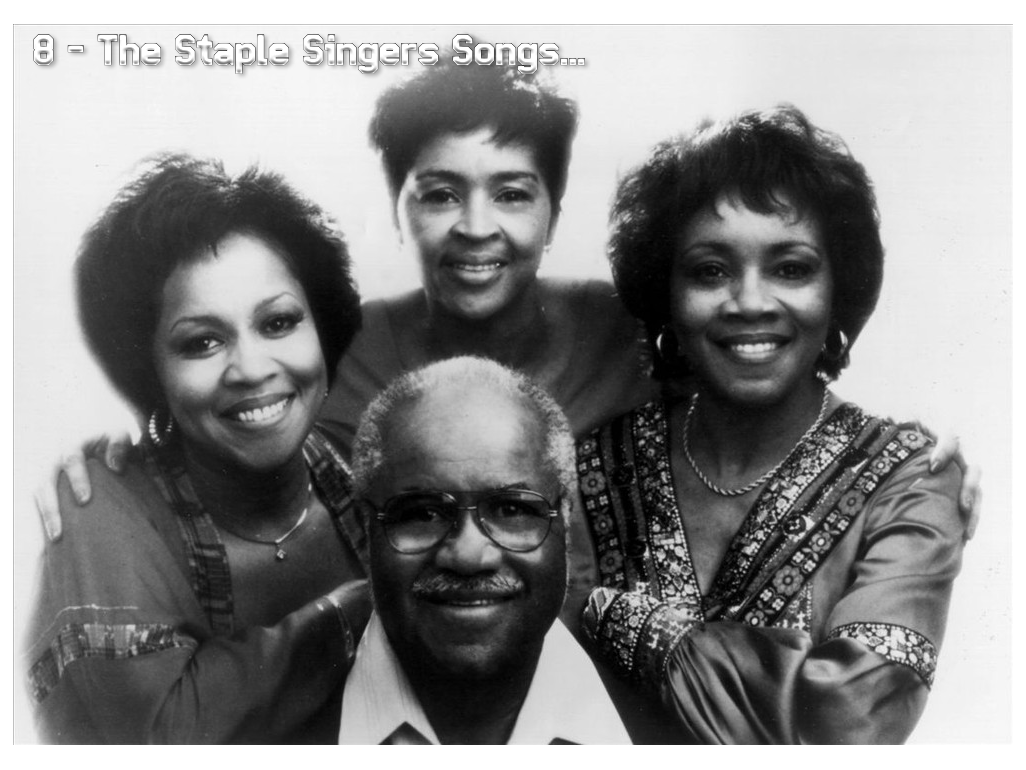(ThyBlackMan.com) Few groups in American music history carry the cultural, spiritual, and social weight of The Staple Singers. Led by Roebuck “Pops” Staples and anchored by the powerful, soulful voice of Mavis Staples, the group seamlessly bridged gospel, soul, and R&B, while also lending their voices to the soundtrack of the Civil Rights Movement. They were not only entertainers but also messengers—reminding listeners of faith, perseverance, and collective strength. Their catalog contains a wide range of music that remains strikingly relevant, uplifting, and musically rich even today.
Here are eight The Staple Singers songs that every music lover should check out, both for their artistry and their timeless resonance.

1. “I’ll Take You There”
Few songs encapsulate the pure essence of joy and spirituality in secular music like “I’ll Take You There.” From the very first bass line, courtesy of the legendary Muscle Shoals Rhythm Section, the track instantly creates a hypnotic groove that is impossible to resist. Released in 1972 on the Be Altitude: Respect Yourself album, it quickly became one of The Staple Singers’ biggest hits, soaring to number one on the Billboard Hot 100.
Mavis Staples’ voice drives the track, balancing a deep earthiness with a gospel-trained call to transcendence. She isn’t merely singing; she’s testifying. Her declaration—“I know a place, ain’t nobody cryin’, ain’t nobody worried”—feels less like a lyric and more like a promise. In the early 1970s, amid social turmoil, wars abroad, and racial struggles at home, this song offered listeners a sonic escape, a utopian vision painted through melody.
One of the fascinating elements of this song is its minimalism. Much of the track relies on a single bass riff, accented by understated guitar and drums. Instead of crowding the arrangement, the sparseness allows Mavis’ voice and the Staple Singers’ harmonies to soar above it all. This stripped-down approach creates a meditative groove, pulling the listener into a trance-like state, almost like a spiritual chant. It’s proof of how simplicity, when done right, can become transcendent.
Today, the track remains just as vital. It has been covered, sampled, and featured in commercials, films, and political events. Each time it resurfaces, it retains its power to uplift, because its message of peace and sanctuary is universal. Listening to it now, one cannot help but sway along, feeling the same warmth that audiences in the 1970s felt. And beyond nostalgia, the song serves as a reminder that music can open doors to healing in a world that still desperately seeks refuge.
For modern listeners, “I’ll Take You There” works both as an anthem and a meditative groove. It’s a reminder that music can function as both protest and balm—a spiritual transportation system disguised as soul music. When played today, it doesn’t feel dated—it feels eternal.
2. “Respect Yourself”
If “I’ll Take You There” is a song of uplift, “Respect Yourself” is a call to accountability. Written by Luther Ingram and Mack Rice, this 1972 classic puts responsibility in the hands of its listeners, urging Black men and women to carry themselves with dignity in a world eager to demean them. “If you don’t respect yourself, ain’t nobody gonna give a good cahoot,” the group declares with righteous fire.
Musically, the track is a masterpiece of funk-infused gospel. Pops Staples’ understated guitar lines give the song a sharp backbone, while the Muscle Shoals rhythm players again provide a gritty yet smooth groove. Mavis Staples’ vocals cut like a preacher from the pulpit—commanding, uncompromising, yet deeply compassionate. The harmonies add force, making the chorus sound like a congregation backing up the sermon.
At the time of its release, “Respect Yourself” resonated strongly with the ethos of the Civil Rights era. The song wasn’t merely about self-esteem; it was about collective survival. By commanding respect from within, the community gained strength against the forces that sought to devalue it. In this way, the track became both a moral guide and a rallying cry, teaching empowerment through self-respect.
Its influence has extended well beyond the 1970s. The song has been covered by a wide range of artists, from Bruce Willis to B.B. King, which only underscores its universality. The Staple Singers delivered it as gospel funk, but its truth can sit inside any genre, any voice, any decade.
Even in today’s climate, “Respect Yourself” feels urgent. Issues of self-worth, dignity, and community cohesion are as relevant as ever. For new generations, the song plays like a blueprint for personal empowerment wrapped in a groove that demands to be played loud. If “I’ll Take You There” feels like comfort, “Respect Yourself” feels like a challenge—and both roles are crucial.
3. “Let’s Do It Again”
Perhaps the most sensual of The Staple Singers’ hits, “Let’s Do It Again” is proof that the group could excel outside the gospel-rooted soul they were most known for. Produced by Curtis Mayfield for the soundtrack of the film of the same name, the song topped the Billboard Hot 100 in 1975 and showcased a different side of the group.
Unlike the fiery empowerment of “Respect Yourself” or the spiritual transcendence of “I’ll Take You There”, this track is a smooth, sultry groove. With its laid-back instrumentation and soft harmonies, the song drips with intimacy. Mayfield’s influence is all over the track—the subtle funk, the delicate strings, and the sexy bassline. It was a deliberate shift, leaning into the romantic, even erotic side of soul music.
Mavis Staples’ delivery here is intentionally restrained, yet her voice still carries that unmistakable gravitas. Instead of fiery exhortation, she offers warmth and invitation. Her vocals wrap around the lyrics like silk, demonstrating her ability to convey tenderness as convincingly as righteous fire. It was a side of Mavis many fans hadn’t fully heard, proving her versatility as a vocalist and performer.
For longtime fans of The Staple Singers, this song was both surprising and refreshing, demonstrating their ability to stretch into romantic soul without sacrificing artistry. Some critics at the time worried that the group was moving too far from their gospel foundations, but history has been kind to “Let’s Do It Again.” It stands today as one of the great slow jams of the 1970s.
Modern audiences can still appreciate “Let’s Do It Again” as a slow jam classic. It sits comfortably alongside tracks by Marvin Gaye, Curtis Mayfield, or Al Green, proving that The Staple Singers could thrive in nearly any soul subgenre. It’s the kind of song that plays perfectly on a late-night playlist, creating atmosphere without trying too hard—a testament to the group’s depth and adaptability.
4. “If You’re Ready (Come Go with Me)”
Released shortly after “I’ll Take You There,” “If You’re Ready (Come Go with Me)” carried the same sense of invitation but with a slightly more pronounced social edge. Built on a buoyant groove, the song urges listeners toward collective unity, framed as a journey that everyone is welcome to take.
The lyrical content reflects the optimism of the early 1970s—a hope that if people could come together, wars and struggles could give way to peace and progress. The chorus, “If you’re ready, come go with me, no hatred will be tolerated,” plays like a plea and a prayer wrapped in funk. In many ways, it was The Staple Singers doubling down on their role as musical messengers, offering both comfort and guidance in turbulent times.
What makes this track so enduring is its adaptability. It is both a love song and a movement song. The invitation could be romantic, spiritual, or communal. This ambiguity gives the track timelessness, allowing it to resonate differently depending on the listener’s state of mind. That duality is one of the reasons it still feels so fresh—because its meaning shifts based on context.
Musically, it’s one of their most uplifting arrangements. The tempo is lively, the rhythm crisp, and the harmonies perfectly placed to echo the sense of unity the lyrics call for. The song feels tailor-made for community gatherings, marches, or even a dance floor, where its groove could bring strangers together for a few minutes of joy.
For contemporary ears, “If You’re Ready” is a song that bridges divisions. In an age marked by polarization, the Staple Singers’ optimism feels refreshing and radical. Listening to it today can reignite a sense of hope that unity is possible, even if only for the length of a song. It’s one of those tracks that proves music doesn’t just reflect society—it can actively reshape it.
5. “Heavy Makes You Happy (Sha-Na-Boom-Boom)”
One of the more playful songs in The Staple Singers’ catalog, “Heavy Makes You Happy” shows that the group could infuse joy and fun into their socially conscious messages. The song’s bouncy beat, catchy chorus, and spirited delivery make it one of their most lighthearted yet irresistible tracks. It was originally written by Jeff Barry and Bobby Bloom, but The Staple Singers brought it to life with their unique gospel-inflected soul.
The lyrics celebrate happiness in its most immediate and physical sense. While some Staple Singers songs lean into moral instruction or spiritual uplift, this one simply embraces the joy of being alive, dancing, and feeling good. The repetition of “Sha-na-boom-boom” adds a childlike innocence to the track, which, when combined with Mavis’ strong vocals, creates a delightful contrast. It’s a reminder that sometimes the most revolutionary act is to celebrate joy in the face of hardship, especially during a time when Black America was fighting for justice and equality.
Mavis Staples’ delivery on this track is particularly dynamic. She leans into the playful repetition, turning what could have been throwaway lines into something deeply engaging. There’s an effortlessness in her delivery—she sounds like she’s genuinely smiling as she sings. The harmonies from Pops and the rest of the family only amplify the song’s celebratory nature, making it sound like a jam session between friends that just happened to produce a hit.
Listening today, “Heavy Makes You Happy” is a reminder of the group’s versatility. It can still light up a dance floor or bring smiles in a casual listening session. Its message—that happiness itself is a powerful, sustaining force—resonates as much now as it did in the early 1970s. For modern listeners, it is a reminder that joy is both contagious and resilient, a survival tool that continues to carry people through troubled times.
6. “Touch a Hand, Make a Friend”
Few songs better embody The Staple Singers’ ethos of unity and connection than “Touch a Hand, Make a Friend.” Released in 1973, the track has a gospel-rooted sensibility but is framed as a secular anthem for human kindness. It was one of the last major hits they recorded with Stax, and it showed that the group’s message of togetherness could be delivered with both conviction and sweetness.
The premise is simple: extending kindness through physical and emotional connection. In a time when America was wrestling with social upheaval, the lyrics carried profound weight. The idea that something as small as reaching out and making a friend could transform society reflects the group’s unshakable faith in humanity. It was a call for empathy when division was at its height, and its message has not dimmed over the decades.
Musically, the track is upbeat yet soulful, with the kind of chorus that practically demands audience participation. Pops Staples’ guitar lines are understated yet essential, providing texture beneath the soaring vocals. One can easily imagine crowds at Staple Singers concerts swaying together, joining hands, and singing along. The song carries that communal energy in its DNA, designed not just to be heard but to be experienced with others.
For today’s listeners, “Touch a Hand, Make a Friend” feels almost prophetic. In an era dominated by digital interactions and social fragmentation, the song reminds us of the power of real human connection. It is a piece of advice that remains revolutionary in its simplicity. More than just a relic of the past, the track still works as a call to action for a world in need of compassion and unity.
7. “Why (Am I Treated So Bad)”
Before their mainstream soul success, The Staple Singers were deeply entrenched in the Civil Rights Movement. “Why (Am I Treated So Bad)” is one of the clearest examples of this connection. Written in response to the struggles of the Little Rock Nine—Black students who faced violent opposition when integrating Central High School in 1957—Pops Staples crafted a song that became an anthem of endurance in the face of racial injustice.
The track is slower and more somber than many of their later hits. Its simplicity is its strength—anchored by Pops’ mournful guitar and the group’s heartfelt harmonies. The refrain, “Why am I treated so bad?” is both lament and indictment, carrying the weight of centuries of inequality. The starkness of the arrangement forces listeners to sit with the pain embedded in the question.
Dr. Martin Luther King Jr. himself was said to be deeply moved by this song, often requesting it to be sung at events. This association further underscores the track’s historical significance, linking it directly to the broader Civil Rights struggle. When King embraced the song, it became more than music—it was testimony, a cry for justice that aligned perfectly with the moral urgency of the movement.
Listening today, the song still hits with raw emotional power. Sadly, its relevance has not faded. The question of unequal treatment continues to resonate, whether in the context of racial justice, gender equality, or broader social struggles. For contemporary audiences, it offers both a history lesson and a reminder of the ongoing fight for justice. It is one of those rare songs that functions as both art and historical document, showing the Staple Singers’ deep role in the soundtrack of resistance.
8. “This May Be the Last Time”
Going back to their gospel roots, “This May Be the Last Time” is one of The Staple Singers’ earliest recordings and a spiritual classic. Long before the group found commercial success on Stax Records, they were singing raw, unfiltered gospel that carried the traditions of the Black church into broader audiences. It’s one of those songs that defined their early sound and set them apart from other gospel quartets of the era.
This track is stark compared to their later hits, featuring minimal instrumentation—just Pops’ signature tremolo guitar and the family’s layered harmonies. The lyrics are steeped in gospel tradition, warning listeners to live right because tomorrow is not promised. The intensity of their delivery conveys both fear and faith, creating a hauntingly powerful performance that transcends its religious roots.
Historically, this song had a long influence. The Rolling Stones would later adapt it into their own rock version (The Last Time), showing how The Staple Singers’ gospel heritage seeped into mainstream popular music. That crossover influence highlights how the family’s artistry was a bridge between sacred traditions and the evolving world of secular popular music.
Even today, “This May Be the Last Time” is a riveting listen. Its rawness and urgency cut through modern production gloss, reminding us of the roots of American popular music. For anyone exploring the foundations of soul and gospel, this track is essential listening. It stands as a testament to the idea that sometimes the simplest arrangements carry the most enduring weight, and it remains one of the most striking examples of the Staple Singers’ early power.
The Staple Singers’ discography is more than just a collection of songs—it is a chronicle of American history, spirituality, and resilience. From gospel foundations like “This May Be the Last Time” to crossover soul hits like “Let’s Do It Again” and timeless anthems like “I’ll Take You There,” their music continues to resonate with power and grace.
Each of the eight songs explored here offers a different entry point into the group’s artistry. Some lift the spirit, others challenge the conscience, and still others invite intimacy or joy. What unites them is the sincerity of their delivery and the timelessness of their message.
Listening to The Staple Singers today is not just an act of nostalgia; it is an immersion in music that still speaks directly to the soul. Their songs are living testaments to the power of music to inspire, heal, and unite.

















Leave a Reply